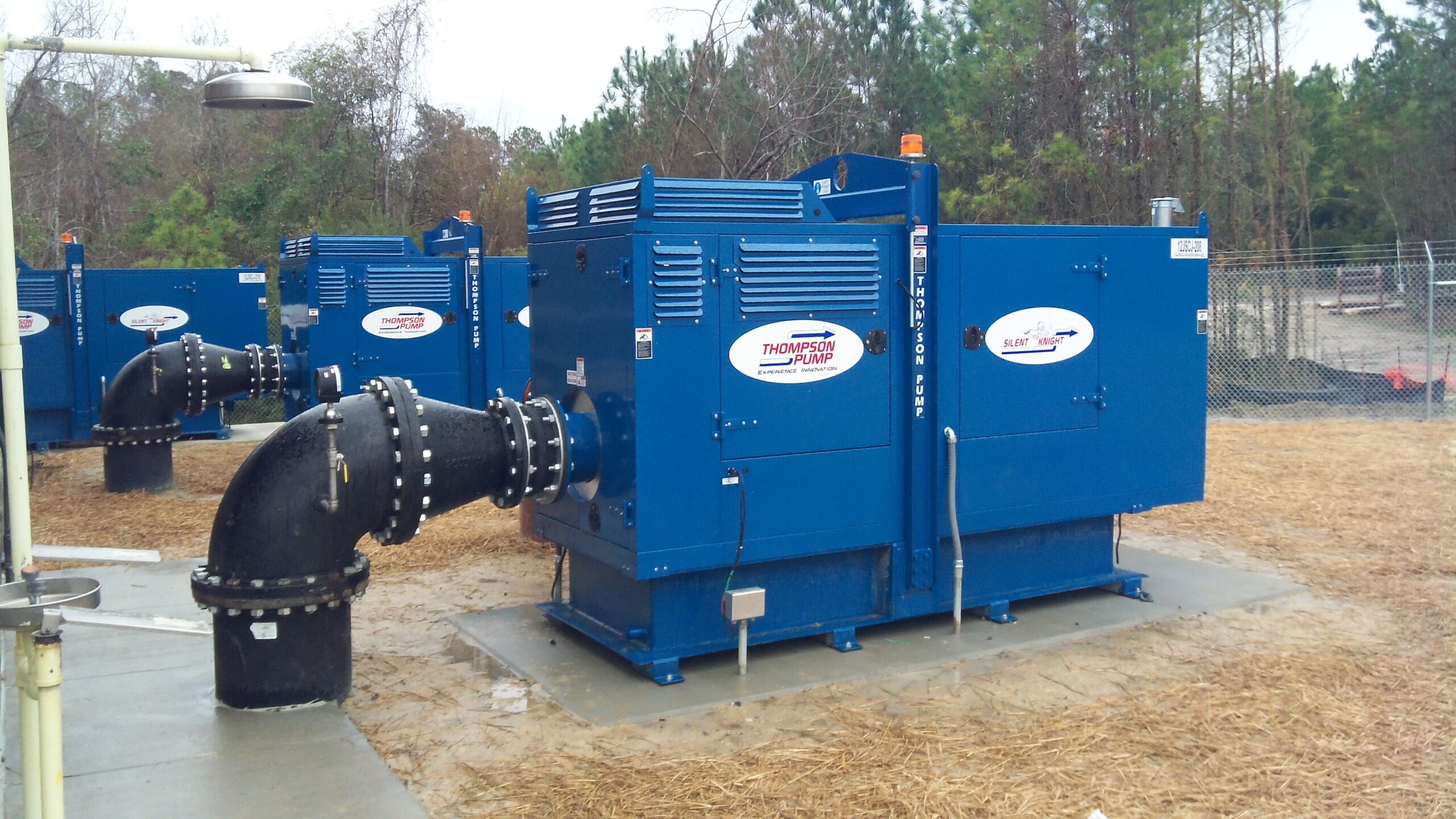Case Study: Lift Station Backup Pumps

Lift stations are critical components to every city’s management of water and wastewater. Like any piece of equipment housed outside, lift stations are subject to natural disasters, flooding and other malfunction-inducing issues. Having a reliable backup system in place is key when those unforeseen factors strike, but not all backup system options are created equal, especially when looking at traditional electric-driven ones.
Problem:
Many municipalities experience recurring challenges with critical components in their collection systems. One of the most common problems are power outages at lift stations which quickly render electric-driven pumps inoperable. To account for these challenges, most consulting engineers quickly incorporate a surface mounted, diesel-driven generator with automatic transfer switch. Although generators have been utilized for many years, most municipalities continue to experience one or more of the following:
- Ground water infiltration, flooding or stormwater inflow causing exponential increases in flow that exceeds the electric-driven pump’s design capabilities.
- Debris clogs the electric-driven pumps, rendering them inoperable.
- Mechanical failures occurring within the electric motor, and/or pump components that are consistently exposed to dangerous gases, foreign debris and other damaging situations.
- Rodents inadvertently damaging electric components that are critical for generator operation.
- Electrical surges during lightning storms damage automatic transfer switches, and the generators never sense the power outage.
- Continuous-operation and larger diesel engines are usually required for diesel-driven generators. This leads to higher fuel consumption due to enlarged fuel tanks (and fuel costs).
Solution:
Municipalities have been finding diesel-driven pumps a better alternative to traditional electric systems. Through the years, diesel-driven pumping systems have evolved to incorporate highly efficient pump components with consistent, environmentally-friendly priming systems. These priming systems operate automatically and allow surface-mounted, diesel-driven bypass pumps to quickly remove air from the suction piping to prime the pump. With the majority of lift stations and collection manholes being less than 25 feet in overall depth, the stationary bypass pump can remove the influent flow with each operating cycle and boosts the wastewater to the treatment facility. After seeing how effective these pumping systems were in preventing an SSO, many municipalities realized the following benefits in using diesel-driven pumps:
- 100% Redundancy. The diesel bypass pump only requires the suction/discharge piping/hose, the wet well and the downstream force main connection to move the wastewater to its next location. These components rarely malfunction during most reported SSO events.
- More efficiency. Since the diesel engine is providing energy directly to pump components that are up to 83% efficient, there is no concern with double efficiency losses seen in electric-driven systems.
- Less fuel consumption. Low fuel consumption is due to operating efficiency, and most important: intermittent auto-start/stop based on water level only. The cost of acquisition can thereby be reduced because of smaller fuel storage tanks and no need for an automatic transfer switch.
- Quieter operating noise. Most sound attenuation methods are similar between generators and pumps, but diesel-driven pumps usually require less horsepower and automatically stop when flow is low. Low flows usually occur at night in residential areas, so sound-attenuated canopies, like Thompson’s Silent Knight®, are preferred.
- Less costly to install. The costs of materials, labor, and design for diesel pumps is usually less than certified electricians, automatic transfer switches, water-tight cables, etc.
- EPA Compliant. EPA-level Standards are retained for on-site emergency generator back-up, so diesel pumps are compliant for lift stations.
- Able to conduct bypassing during wet well maintenance, electric pump maintenance or inspections.
- Trouble-shooting and basic operational training is easier for surface-mounted, mechanical components. Load testing, lock-out-tag-out procedures and other electrical-related safety concerns are eliminated.
- Easily monitored or controlled by existing SCADA system, or optional on-board telemetry built into the diesel pump control panel. Learn more about Thompson’s new RECON2000T control panel here.
- Similar to the above, lift station control panels are no longer required for basic, automatic bypass operation. Lift station control panels are subject to damaging high wind conditions that could cause tree collapse and/or other projectiles to travel near lift stations.
After factoring in the lower fuel, maintenance and labor costs, in addition to the elimination of issues present with electric-driven systems, more municipalities are finding diesel-driven pumps to be a more cost-efficient and reliable backup system for lift stations.
Contact your local Thompson Pump branch or distributor to discuss a custom solution for your lift stations.
2017
